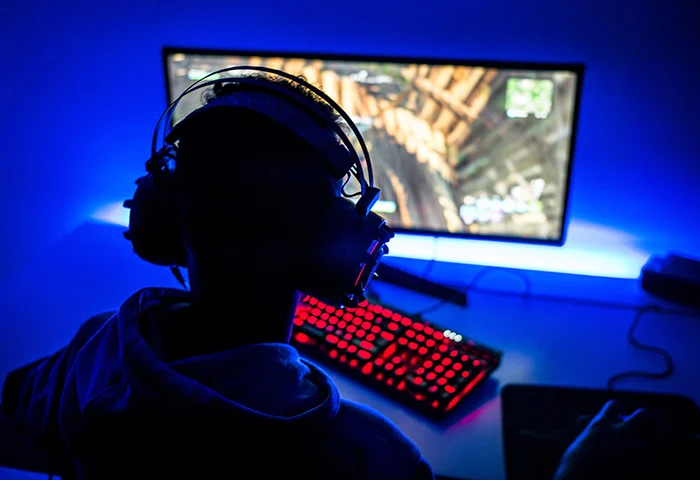How to Increase FPS & Boost Gaming Performance on PC
A smooth gaming experience often hinges on high FPS (frames per second) and optimized performance. If your PC struggles to keep up, here’s a guide to maximize its gaming potential. Whether you’re using a mid-tier rig or an older setup, these tips can help you achieve smoother gameplay.
1. Update Graphics Drivers
The first and most crucial step is ensuring your GPU drivers are up to date. Updated drivers often include optimizations for the latest games and can boost performance.
- Visit the official website for your GPU manufacturer (NVIDIA, AMD, or Intel) to download the latest drivers.
- Use software like NVIDIA GeForce Experience or AMD Adrenalin to automate updates.
2. Adjust In-Game Settings
Lowering in-game settings can significantly improve performance, especially on demanding titles.
- Key Settings to Adjust:
- Resolution: Opt for a lower resolution if your FPS is suffering.
- Textures: Set to medium or low.
- Anti-Aliasing: Reduce or turn off completely.
- Shadows: Lower shadow quality or disable it.
- V-Sync: Disable V-Sync for better responsiveness.
- Use a preset like “Performance” instead of “Ultra” or “High.”
3. Optimize GPU Settings
Tuning your GPU’s control panel settings can provide additional FPS.
- For NVIDIA Users:
- Open the NVIDIA Control Panel.
- Navigate to “Manage 3D Settings” > “Program Settings.”
- Set your game to “High-Performance NVIDIA Processor.”
- Adjust settings like Power Management Mode to “Prefer Maximum Performance.”
- For AMD Users:
- Use Radeon Software.
- Enable “Radeon Boost” and “Radeon Chill” for dynamic performance adjustments.
4. Close Background Applications
Background apps can hog CPU, RAM, and GPU resources.
- Open Task Manager (Ctrl + Shift + Esc) and close unnecessary apps.
- Disable startup programs by going to Task Manager > Startup.
5. Enable Game Mode on Windows
Windows Game Mode prioritizes gaming processes for better performance.
- Go to Settings > Gaming > Game Mode and turn it on.
- Use Xbox Game Bar to monitor system performance (optional).
6. Adjust Power Settings
Your PC’s power plan can affect its gaming performance.
- Navigate to Control Panel > Power Options.
- Select High Performance or create a custom plan focused on maximizing power for gaming.
7. Overclock Your GPU/CPU
Overclocking pushes your hardware beyond its default settings to boost performance.
- GPU Overclocking: Use tools like MSI Afterburner or EVGA Precision X1 to safely increase clock speeds.
- CPU Overclocking: Check BIOS settings and adjust clock multipliers. Ensure adequate cooling.
Note: Overclocking may void warranties and increase system heat, so proceed with caution.
8. Upgrade Your Hardware
If your PC still struggles, consider hardware upgrades.
- RAM: Increase to at least 16GB for modern gaming.
- Storage: Install an SSD for faster game load times and system responsiveness.
- GPU: Upgrade your graphics card if it’s outdated.
- CPU: Ensure your processor can keep up with the GPU.
9. Clean Your System
Over time, dust and debris can clog fans and reduce airflow, causing overheating and throttling.
- Open your case and clean components with compressed air.
- Ensure proper cable management for improved airflow.
- Replace or upgrade cooling solutions if necessary.
10. Use Performance Monitoring Tools
Monitoring tools can help identify bottlenecks and optimize settings.
- Use software like MSI Afterburner, HWMonitor, or NVIDIA/AMD overlays to track:
- CPU and GPU usage
- Temperatures
- RAM consumption
11. Update or Reinstall the Game
Game developers release patches to fix bugs and optimize performance.
- Check for updates via your gaming platform (e.g., Steam, Epic Games Store).
- If problems persist, consider reinstalling the game to ensure clean installation files.
12. Disable Background Overlays
Overlays from apps like Discord, Steam, or NVIDIA can consume resources.
- Turn off overlays via the app’s settings:
- Discord: Go to User Settings > Overlay and disable.
- Steam: Disable overlay in the settings menu.
- NVIDIA GeForce Experience: Turn off the in-game overlay.
13. Adjust Virtual Memory
If your system is low on RAM, increasing virtual memory (paging file) can prevent performance drops.
- Go to Control Panel > System > Advanced System Settings.
- Under “Performance,” click Settings > Advanced > Change.
- Set virtual memory size to at least 1.5x your RAM size.
14. Disable Unnecessary Visual Effects
Windows visual effects can slow down gaming performance.
- Go to Control Panel > System > Advanced System Settings > Performance Settings.
- Select Adjust for best performance or customize by turning off individual effects.
15. Use Game Boosting Software
Some third-party software can optimize your PC for gaming by closing unnecessary processes and adjusting settings.
- Examples include Razer Cortex and Wise Game Booster.
Conclusion
Improving FPS and gaming performance is a combination of software tweaks, hardware optimization, and regular maintenance. While some adjustments can yield immediate results, others, like upgrading hardware, require investment but pay off in the long run. With these tips, you can enjoy a smoother and more responsive gaming experience on your PC.

